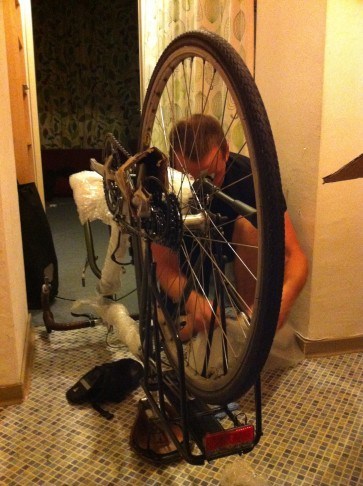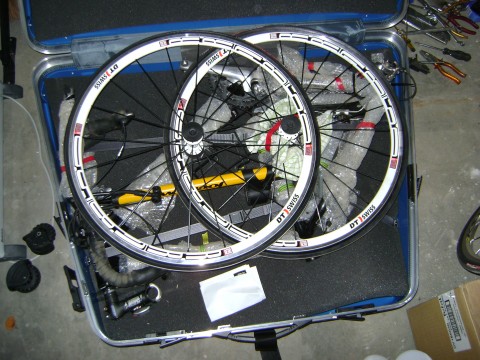Flying with a Bike
Whether you’re going overseas for a race, travelling the world by bike or simply taking a domestic short haul for a ride, your bike is coming with you on your travels. But how do you transport it? And what are the best practices in these scenarios? We’ve created this handy dandy article to help you look after your bike while you’re on the road and out and about.
I’m leaving on a jet plane…
Taking a domestic or international flight with your bike can seem like a daunting prospect. We’ve all heard the horror stories – lost luggage, stolen items, rough baggage handling… but we’re here to assure you that these instances are rarer than you might think, and that there are ways to prevent ill-happenings.
According to the Air Transport Industry Baggage Report by Flight Centre, only one piece of luggage gets lost for every 100 passengers, and the most common times of loss are on transfers, or when someone checks in very late. More than half of all lost luggage is returned within 42 hours and airports around the world have been seeing far fewer losses in later years. Because bikes are seen far less frequently than the suitcases that usually fill baggage holds, there is less chance of is getting lost. According to this baggage handler (and keen cyclist) it’s very rare for handlers to mistreat luggage, because they work “in a fishbowl” where the public can see their every move.
However, there are some things you can do to keep your bike extra safe:
-Take a picture of the packaged bike to show to baggage claim in case it does go on its own adventure.
-Consider attaching a small tracker like this one to the bike to track its journey.
-Wrap the bike in bubble wrap before loading it into its case or box.
-Wrap the packaged bike in cling film or similar to prevent water damage and other meddling.

Packing your bike
When flying with your bike, always check with the company to see their weight restrictions and policies on bike handling.
Qantas: Bike boxes are the only form of case accepted. They can be purchased from most Qantas terminals, or you can use your own if it doesn’t exceed these dimensions:
Length: 140cm (55in)
Width: 30cm (12in)
Height: 80cm (32in)
If the bike’s length exceeds 140cm, the front wheel should be removed and fixed beside the rear wheel - inside the bike box.
Virgin Australia: Hard or soft manufactured bike boxes are acceptable, and some can be purchased at the airport check-in counter for $15. The bike must be checked in at least one hour before departure.
Jetstar: Bike bags or bike boxes are accepted, but neither are sold by Jetstar. Tandems, recumbent bicycles and bike trailers that meet requirements (noted below) can also travel. If the bike’s length exceeds 180cm, the front wheel should be removed and fixed beside the rear wheel inside the bike box.
To pack your bike in a bike bag or box:
1. Deflate tyres
2. Remove pedals
3. Adjust handlebars 90 degrees so they fit parallel to the frame, and secure them to the frame
4. Lower or remove seat
5. Remove any accessories
6. Ensure no part is protruding from the box or bag
7. Remove the rear hanger and derailleur, then wrap and strap it between the rear stays
You may like to add extra foam, packing peanuts or bubble wrap for that added bit of protection.
Soft cases vs hard cases
Always check with your airline if they accept bike cases or just bike boxes. In terms of cases, there are pros and cons for hard and soft cases.
Soft cases are cheaper (they’ll usually set you back $100-$500+), a bit more flexible and lighter, but the fabric outside can get ripped or worn over time.
Hard cases are tough and very protective, but can be heavy, more expensive, and bulky.

It’s your personal choice as to which you’d rather use, and it’s a good idea to try them both before you travel.
Don’t forget to protect your devices, clothes, or gear with our great range of products – and don’t find yourself short of puncture repair kits, a pump or inflators. We hope this post has helped, and wish you the best (and safest) of travels!
Photo credits:
'Boxing the bikes' by Tim Lucas, CC-BY-2.0
Bike in a box by Paul van Brenk, CC-BY-2.0




